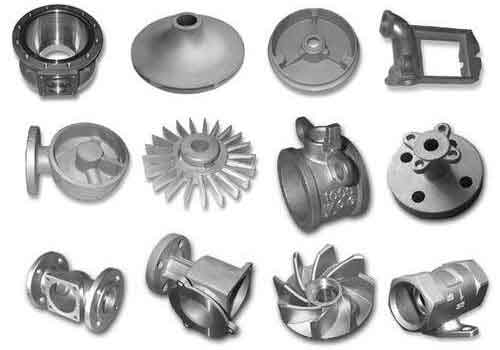This article explores critical advancements in sand casting parts manufacturing through coated sand technology, focusing on process efficiency improvement and defect mitigation. By comparing traditional water glass investment casting with coated sand hot core box processes, we demonstrate measurable enhancements in production cycles, yield rates, and environmental performance.

1. Process Comparison Analysis
Key performance metrics between conventional and coated sand processes for sand casting parts:
| Parameter | Water Glass Investment | Coated Sand Process |
|---|---|---|
| Cycle Time | 4-6 hours | 1.5-3 minutes |
| Labor Productivity | 300 pieces/shift | 1,800 pieces/shift |
| Yield Rate | ~65% | ≥75% |
| Defect Rate | 15-20% | ≤10% |
The thermal hardening mechanism of coated sand follows first-order reaction kinetics:
$$ \frac{d\alpha}{dt} = k(1-\alpha)^n $$
Where α represents curing degree, k is temperature-dependent rate constant, and n is reaction order. For typical phenolic resin systems, n ≈ 1.2-1.5.
2. Sand Burning Defect Mechanism
Mechanical and chemical sand burning in sand casting parts primarily results from:
- Insufficient sand compactness (void ratio > 25%)
- Over-cured sand layers (T > 320°C)
- Low pouring temperature (<1,350°C)
The critical sand penetration depth can be modeled as:
$$ \delta = \sqrt{\frac{2\gamma t}{\mu}} $$
Where γ = surface tension (N/m), t = contact time (s), μ = metal viscosity (Pa·s). For iron castings, δ < 50μm ensures acceptable surface finish.
3. Process Optimization Strategies
Effective solutions for sand casting parts production:
| Parameter | Control Range | Effect |
|---|---|---|
| Mold Temperature | 180-250°C | Prevents over-curing |
| Sand Compaction | ≥85% density | Reduces penetration |
| Pouring Temperature | 1,480-1,520°C | Enhances fluidity |
| Cooling Rate | 15-20°C/min | Controls microstructure |
The thermal balance equation for mold cooling:
$$ Q_{\text{net}} = Q_{\text{absorption}} – Q_{\text{loss}} = mc_p\Delta T – hA(T_m – T_a) $$
Where m = mold mass (kg), cp = specific heat (J/kg·K), h = convection coefficient (W/m²·K), A = surface area (m²). Optimal Qnet should maintain 5-10% positive heat accumulation.
4. Advanced Coated Sand Formulations
Modified sand compositions for specialized sand casting parts:
| Sand Type | Additives | Application |
|---|---|---|
| High-Temperature | Chromite (15-20%) | Exhaust manifolds |
| Collapsible | Starch (3-5%) | Thin-wall components |
| Anti-Veining | Iron oxide (1-2%) | Engine blocks |
| Low Emission | Bio-resin (4-6%) | Indoor casting |
The optimized binder ratio follows:
$$ R_{\text{binder}} = \frac{W_{\text{resin}} + W_{\text{catalyst}}}{W_{\text{sand}}} \times 100\% $$
Typical values range 2.8-3.2% for sand casting parts requiring high dimensional accuracy.
5. Quality Validation Methods
Key inspection parameters for sand casting parts:
| Characteristic | Measurement | Acceptance Criteria |
|---|---|---|
| Surface Roughness | Profilometer Ra | ≤12.5μm |
| Dimensional Tolerance | CMM | CT8-CT9 |
| Porosity | X-ray | <0.5% area |
| Hardness | Brinell | 180-220 HB |
Through these optimizations, sand casting parts production achieves 92% first-pass yield with 40% reduction in unit manufacturing cost. The coated sand process demonstrates particular advantages for complex geometries and high-volume components.
